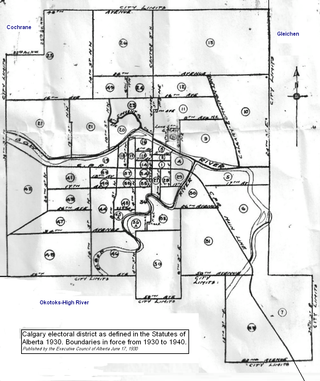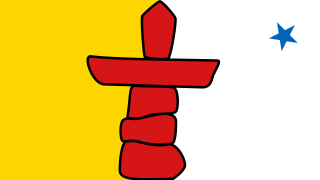Related Research Articles

The Northwest Territories is a federal territory of Canada. At a land area of approximately 1,127,711.92 km2 (435,412.01 sq mi) and a 2021 census population of 41,070, it is the second-largest and the most populous of the three territories in Northern Canada. Its estimated population as of the second quarter of 2024 is 44,936. Yellowknife is the capital, most populous community, and the only city in the territory; its population was 20,340 as of the 2021 census. It became the territorial capital in 1967, following recommendations by the Carrothers Commission.

Devolution is the statutory delegation of powers from the central government of a sovereign state to govern at a subnational level, such as a regional or local level. It is a form of administrative decentralization. Devolved territories have the power to make legislation relevant to the area, thus granting them a higher level of autonomy.
The 2004 Nunavut general election was held on February 16, 2004, to elect the 19 members of the 2nd Legislative Assembly of Nunavut.

Calgary was a provincial electoral district in Alberta, Canada, mandated to return one to six members to the Legislative Assembly of Alberta from 1905 to 1913, and again from 1921 to 1959. The district largely encompassed the boundaries of the City of Calgary, and was revised accordingly as the city grew.
Lethbridge was a provincial electoral district in Alberta mandated to return a single member to the Legislative Assembly of Alberta from 1905 to 1909, and again from 1921 to 1971.
Cardston was a provincial electoral district in Alberta, Canada, mandated to return a single member to the Legislative Assembly of Alberta from 1905 to 1993.

The history of Northwest Territories capital cities begins with the purchase of the Territories by Canada from the Hudson's Bay Company in 1869, and includes a varied and often difficult evolution. Northwest Territories is unique amongst the other provinces and territories of Canada in that it has had seven capital cities in its history. The territory has changed the seat of government for numerous reasons, including civil conflict, development of infrastructure, and a history of significant revisions to its territorial boundaries.

The Northwest Territories division plebiscite was a stand-alone, territory-wide plebiscite conducted on April 14, 1982. This was the first territory-wide plebiscite conducted in Northwest Territories history. The results of the plebiscite would eventually lead to the creation of Nunavut, and spawn three other plebiscites during the creation process of the new territory.
A plebiscite on a capital city was held on 11 December 1995 in the area of the Northwest Territories that was to be split off into the new territory of Nunavut. Voters were given the options of either Iqaluit or Rankin Inlet. Iqaluit was chosen by 60.23% of voters.
Macleod was a provincial electoral district in Alberta, Canada, mandated to return a single member to the Legislative Assembly of Alberta from 1905 to 1993.
Lacombe was a provincial electoral district in Alberta, Canada, mandated to return a single member to the Legislative Assembly of Alberta from 1905 to 1993.
Elections NWT is an independent, non-partisan public agency responsible for the administration of territorial general elections, by-elections, and plebiscites in accordance with the Elections and Plebiscites Act. Elections NWT is headed by the Chief Electoral Officer, an officer of the Legislative Assembly of the Northwest Territories.
Wetaskiwin was a provincial electoral district in Alberta, Canada, mandated to return a single member to the Legislative Assembly of Alberta from 1905 to 1971.
Elections Nunavut is an independent agency that oversees elections and plebiscites in Nunavut, including:

Nunavut is the largest and northernmost territory of Canada. It was separated officially from the Northwest Territories on April 1, 1999, via the Nunavut Act and the Nunavut Land Claims Agreement Act, which provided this territory to the Inuit for self-government. The boundaries had been drawn in 1993. The creation of Nunavut resulted in the first major change to Canada's political map in half a century since the province of Newfoundland was admitted in 1949.
Titus Allooloo is a business man and former territorial level politician from Nunavut, Canada. He served as a member and cabinet Minister of the Northwest Territories Legislature through two terms from 1987 until 1995.
Cypress was a provincial electoral district in Alberta, Canada, mandated to return a single member to the Legislative Assembly of Alberta from 1926 to 1986.
Vermilion was a provincial electoral district in Alberta, Canada, mandated to return a single member to the Legislative Assembly of Alberta from 1905 to 1971.
References
- 1 2 Nunavut (Canada), 26 May 1997: Equal numbers of men and women in the Parliament Direct Democracy (in German)